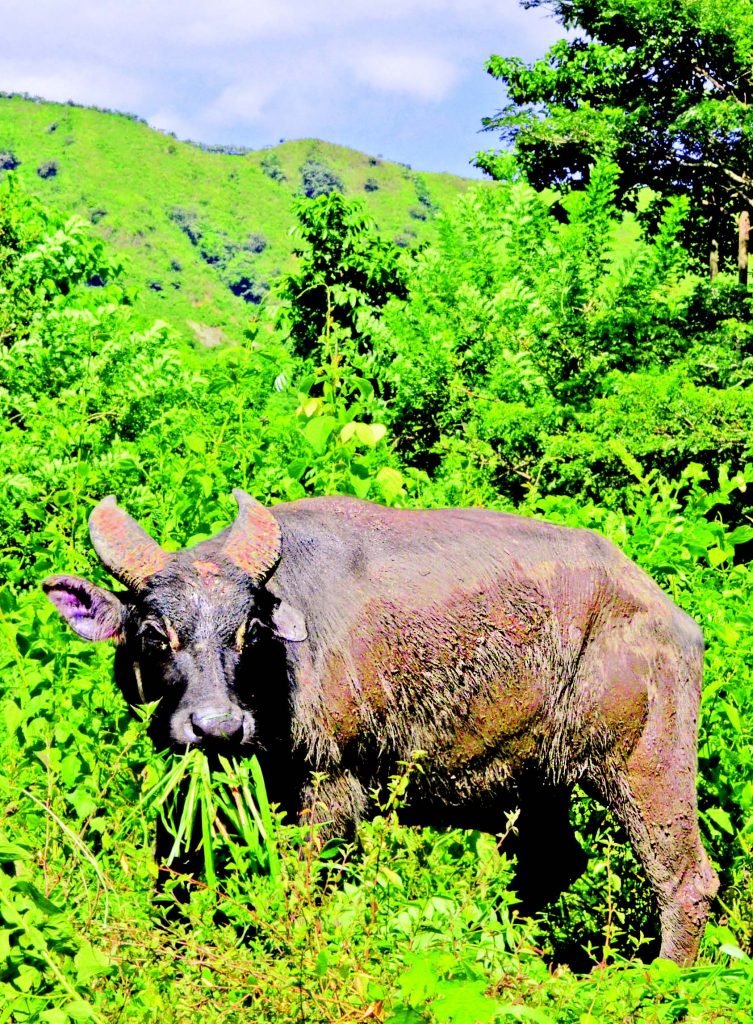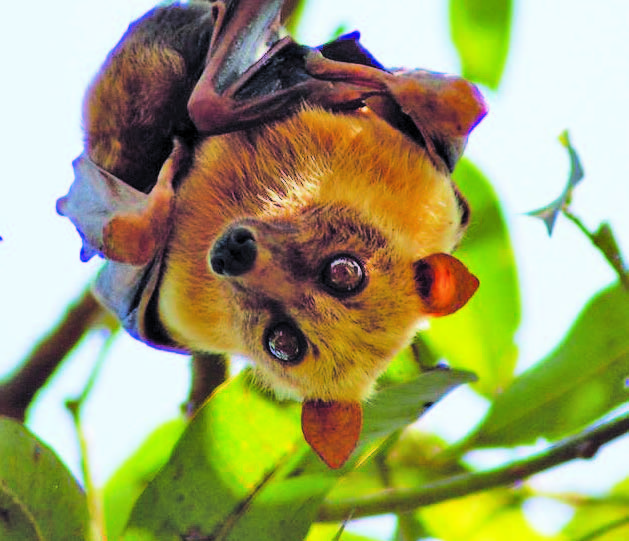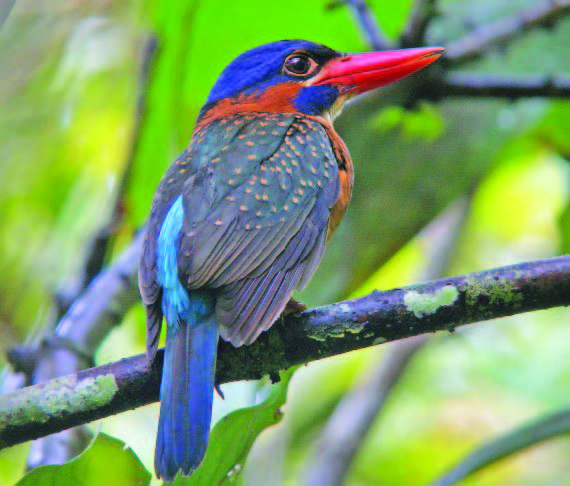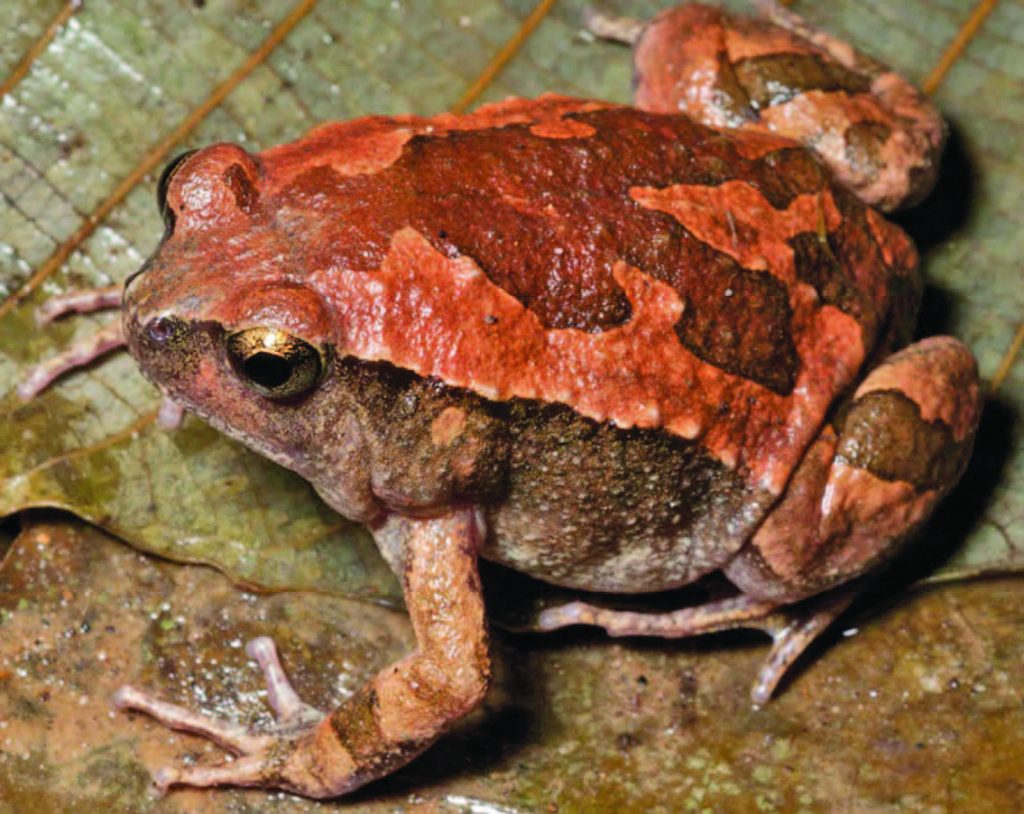Our little archipelago is incredible for about a thousand reasons, but one of the most touted ones has to be the diversity of our endemic flora and fauna. Southeast Asia in general runs plentiful in this regard, so although we’re not necessarily unique, it’s still good to take the time to appreciate what we’ve got.
It’s also important to mention that many of our endemic species are endangered to some degree. But just the sheer oddness of some of these animals make them worth saving — we’ve got to keep the world weird, and wonderful in its weirdness.
Tamaraw (Bubalus Mindorensis)

We start off easy with the Mindoro dwarf buffalo, or simply “tamaraw”. Funny that they should be called a “dwarf” anything, considering they average about four feet at the shoulder, according to a 2012 article by Gregg Yan for Rappler — imagine how big regular buffalos are. And yes, according to the International Union for Conservation of Nature (IUCN) Red List of Threatened Species, they’re endangered: In the 60s, they were reported to have become nocturnal in order to steer clear of people.
However, they are received some reparative attention in recent years, which has worked despite their natural skittishness. They tend to be solitary, only interacting a few times a year, which is typical of certain bovine groups.Tamaraws are known to treat themselves to bamboo shoots and a rest in some tall grass or dense forest.
Sailfin Lizard (Hydrosaurus Amboinensis/Pustulatus)
Named for the upright flap of skin at the base of the tail (at least for males), the sailfin can grow up to about a meter in length, based on — yikes!

Though not much is known about this omnivorous reptile’s social habits, we can tell you that they do manage to breed annually. Hatchlings and adults alike are excellent swimmers from the get-go; their little tail-sail and flat toes help with propulsion. They’ve even been known to run on water, like their South American cousins, the common basilisks.
Sulu Hornbill (Anthracoceros Montani)
This hornbill is relatively uncolorful, sporting a deep charcoal or brown throughout most of its body, ending with white tail feathers. They hatch without a casque (the extra bit on top of their bill that looks like a sort of helmet), but have a dark green sheen on the backs of their heads.

Making their home on mountain slopes, these flying omnivores shriek their way through the now-dwindling forests of Sulu, according to Bird Life International. This bird is currently listed as critically endangered due to an increase in rubber plantations and mining efforts.
Philippine Warty Pig (Sus Philippensis)
It’s almost sad that we don’t have a local version of a meerkat to complete the Animal Sidekick Trifecta, but then it wouldn’t be much use — warty pigs actually tend to be pretty shy and solitary outside of breeding and rearing seasons. If you’ve never imagined a pig building themselves an odd little nest, well… now you can.

In spite of their shyness, females in particular will attack when threatened. They are described as being “robustly built”, which might be one of the best phrases ever, with a rough, dark coat and a smattering of silver hair on their sides. Like some of their swine siblings, they sport a crest down their backs, which males usually put on full display when they’re looking for a mate. [For more info, check out the full-length article on this interesting mammal in this same issue. -Ed.]
Mindoro Climbing Rat (Anonymomys Mindorensis)
The truly odd part about this animal is that it doesn’t look like anything out of the ordinary at all — it just looks like a normal mouse. Except it lives up in trees.

Thriving in the subtropics, not much else is known about this rodent, other than they are currently listed as Vulnerable on the IUCN Red List, and that their young are ironically referred to as “kittens”, according to The Website of Everything. No conservation efforts have been reported yet.
Palawan Flying Fox (Acerodon Leucotis)
Here’s another shy mammal on the lineup. Brown, relatively medium-sized (averaging at about nine inches in total height), and sans tail, these megabats treat themselves to figs whenever they can find them, as reported by Xtian Mack in a 2012 article for Vigattin Tourism.

Also called Palawan fruit bats, they don’t seem to form very large colonies, but are predictably nocturnal. It appears to be difficult to make any real calculations about their population because they largely keep to themselves, but they have officially been listed as Vulnerable due to an estimated decline of about 30 percent within the last two decades.
Blue-capped Kingfisher (Actenoides Hombroni)
Named for its deep blue — almost indigo — crown, this little bird is native to Mindanao, according to Wildscreen Arkive. They have marks of the same color around their red, dagger-like bills, making them look like they have a cheeky little mustache; the rest of them is a deep orange.

Since they keep so still and only occasionally dive down for fish, they are difficult to find, but their calls can be heard just before dawn. Instead of fish, they feed mostly on smaller frogs and some bugs — locusts, beetles, and snails, just to name a few. These are an active, relatively social bunch, with a mating season that can span for more than half the year.
Painted Narrowmouth Toad (Kaloula Picta)
Though this frog can be found all over the world, the Philippines houses three unique subgroups of its own, all of which have adapted characteristics to suit their environment. It seems to depend on how often they spend time in trees; some are completely arboreal, other tree-dwellers will come down to lay their eggs in water during the rainy season, and others still will burrow.

The painted narrowmouth toad tends to thrive in the tropics and subtropics, but seems to be able to live anywhere with sufficient moisture and humidity.
Philippine Flying Dragon (Draco Volans)
Who isn’t fascinated by a winged reptile? While they can’t technically sustain flight, they can still jump pretty far from tree to tree. The Flying Dragon, who grows up to only about 23 centimeters, can glide for an impressive eight meters (25 feet), according to the Project Noah website.

Feeding primarily on tree ants and termites, their heads are described as “blunted and short”, perhaps with respect to the typical head-body ratio of similar reptiles. Their wings are brightly colored, sporting oranges and reds and blues.
Palawan Bearcat or Binturong
Like many animals with similarly misleading names, this nocturnal creature is actually neither a bear nor a cat. It is better known as the binturong, though no one today can tell you what that means — the language it originated from is extinct, reported Jason Bittel in a 2016 article published in the Natural Resources Defense Council website. Thankfully, these little “stewards of the forest” aren’t extinct yet, and there are efforts to bring and keep their numbers up.

Fun fact: they smell like popcorn! But that scent comes from their anal glands, so maybe don’t go sniffing around for it.
This appeared in Animal Scene magazine’s January 2019 issue.






